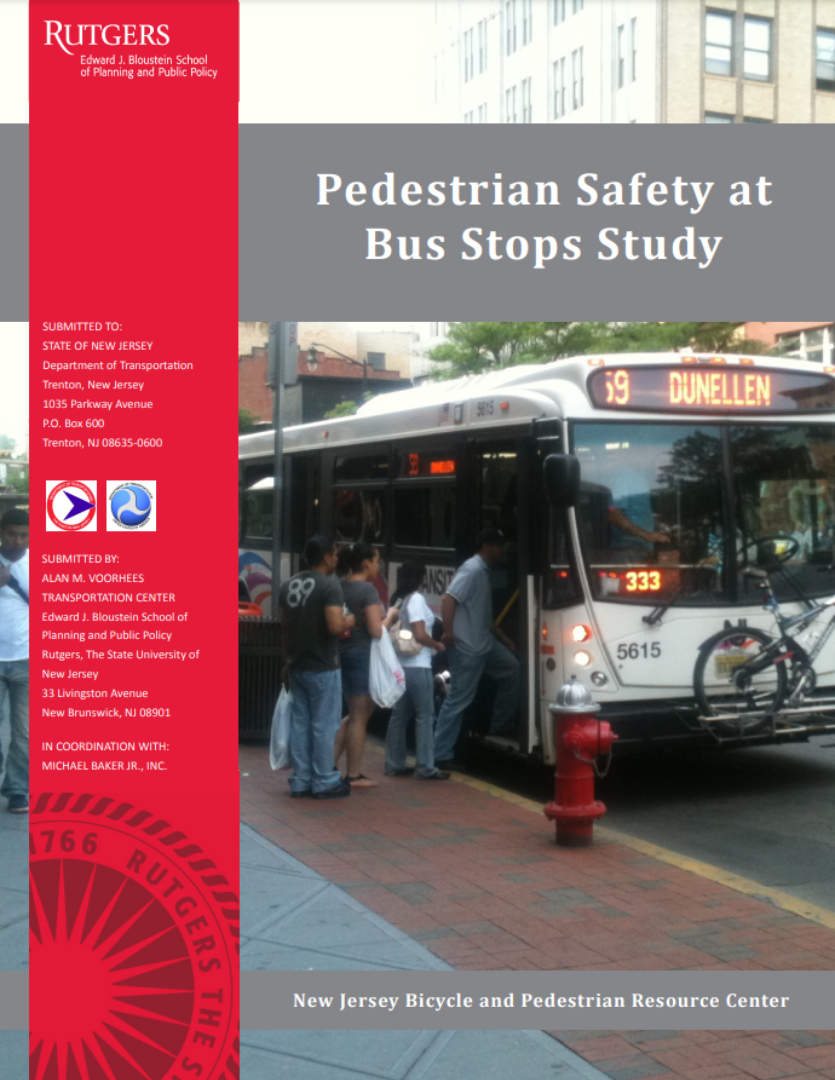The purpose of this research—conducted in partnership with Michael Baker, Jr., Inc.—was to identify high pedestrian crash locations at or near bus stops in New Jersey; analyze motorist and pedestrian behavior proximate to identified bus stops; comprehend pedestrian safety perceptions; and, analyze built environment characteristics that may contribute to crashes. Assessing factors that contribute to pedestrian crashes can be very complex, so our research approach incorporated a number of methods to assess the problem from different vantage points. These methods included:
- Interviews with experts to gain a complete understanding of the regional policy context – the decision making process regarding location and design of bus stops and perceived opportunities and barriers to improving bus stop pedestrian safety.
- A geographic information systems analysis of crashes using crash reports, road characteristics, and other data to identify the sites and corridors with the highest crash incidence, to determine the factors associated with high crash incidence, and to select locations for site-level analysis.
- An intercept survey of bus passengers to determine what they believe are the most significant factors contributing to crashes.
- Direct observations of pedestrian and motor vehicle driver behavior at selected bus stops both to identify behavior that may contribute to crashes, and to identify the proportion of pedestrians in the vicinity of bus stops that are bus passengers.
- Field inventories at selected bus stops in order to better identify and understand design and
operational issues that may contribute to pedestrian crashes near bus stops.
